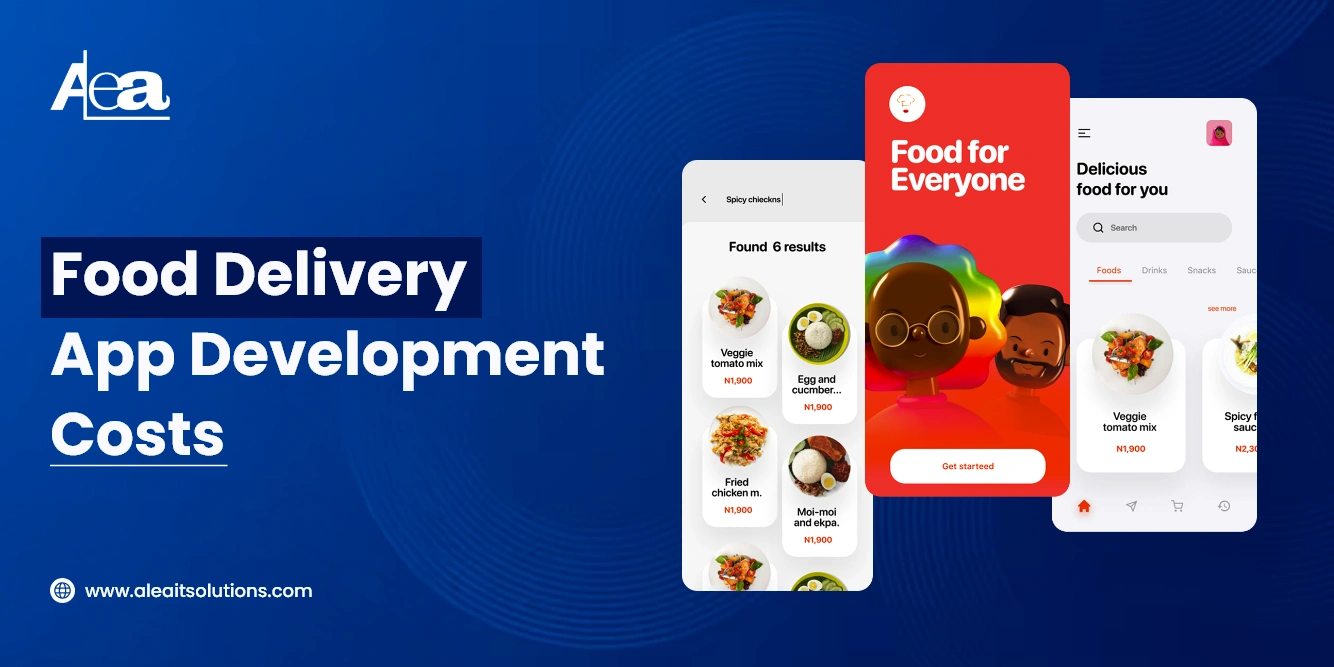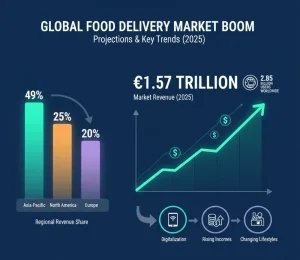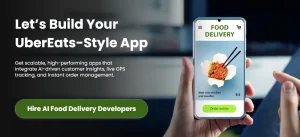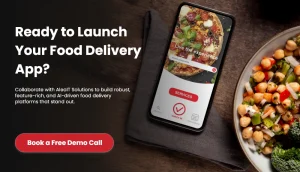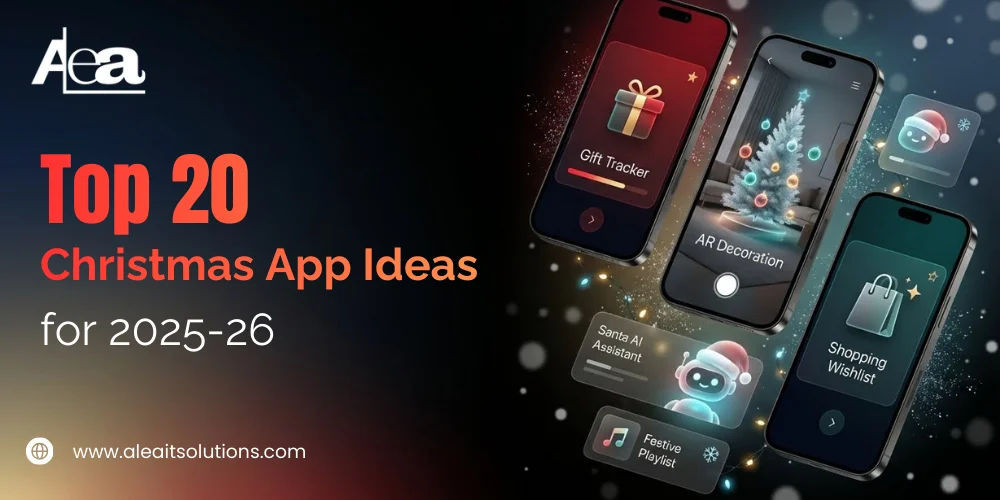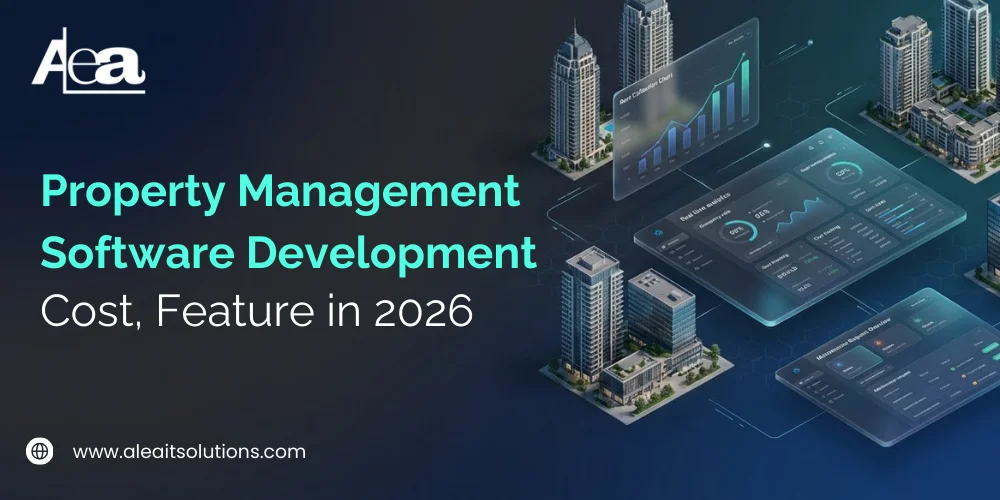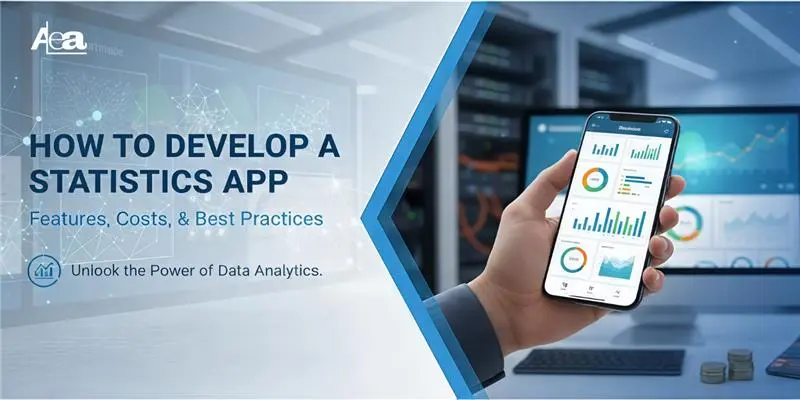In today’s fast-paced digital world, the food delivery industry has transformed from a convenience to a necessity. The rise of on-demand services and mobile technology has completely changed how people order and consume food.
From quick snacks to gourmet meals, consumers now expect their favorite dishes to be delivered at their doorstep with just a few taps.
This growing dependence on mobile delivery platforms has made food delivery apps one of the most lucrative sectors in the global tech ecosystem, blending culinary delight with digital convenience.
How to build a food delivery app starts with defining your business model and understanding customer needs. Begin with research, wireframing, and UI/UX design. Include features like restaurant search, in-app payments, order tracking, and customer reviews.
Use technologies such as Node.js, React Native, or Flutter for scalable performance. Testing and post-launch support are essential for success.
Partnering with an experienced food delivery app development company ensures efficient delivery, quality assurance, and integration of advanced features like AI recommendations and GPS tracking for enhanced user engagement.
Understanding the Global Demand for Food Delivery Apps
The global online food delivery market is experiencing explosive growth. According to Statista, the market is projected to reach $1.79 trillion by 2028, growing at a CAGR of over 10% from 2024 to 2028.
Urbanization, changing lifestyles, and the post-pandemic surge in digital adoption have accelerated this trend. Consumers across the globe prefer the convenience, variety, and contactless experience that food delivery apps offer.
Emerging technologies like AI-driven personalization, predictive delivery times, and drone logistics are further fueling demand.
The food delivery app development cost depends on several factors, including the app’s complexity, design, features, and location of the development team.
On average, developing a food delivery app like UberEats or DoorDash can cost between $20,000 to $100,000+.
Costs rise with real-time tracking, AI-based recommendations, or multiple integrations. A well-planned MVP can help reduce initial investment while validating market potential.
Partnering with an expert app development company ensures scalability, high performance, and a seamless user experience, helping your business achieve better ROI in the competitive food delivery market.
Why Investing in a Food Delivery App is a Smart Move
For entrepreneurs and investors, food delivery apps present a powerful opportunity for sustainable profit.
The business model allows for multiple revenue streams, including delivery charges, commission fees, subscriptions, and in-app advertisements.
Moreover, as people continue to prioritize convenience and time efficiency, the demand for such platforms will only rise.
Investing now means entering a future-proof market that thrives on innovation, consumer behavior insights, and digital scalability. In short, the global appetite for online food delivery shows no signs of slowing down.
What is a Food Delivery App?
A food delivery app is a digital platform that connects consumers with restaurants, cafes, and cloud kitchens, allowing them to browse menus, place orders, and get meals delivered to their doorstep.
These apps streamline the entire process from order placement and payment to real-time tracking and customer feedback.
The primary goal is to make food ordering fast, convenient, and personalized. Popular examples like Uber Eats, DoorDash, Zomato, and Deliveroo have redefined how people access food services globally.
With features such as AI-based recommendations, GPS tracking, multiple payment options, and loyalty programs, food delivery apps have become an essential part of modern dining culture.
Definition and Core Purpose
At its core, a food delivery app serves as a bridge between consumers and food providers. It eliminates physical barriers, enabling restaurants to reach wider audiences while offering customers the flexibility to order anytime, anywhere.
Beyond convenience, these apps also focus on user experience, operational efficiency, and data-driven insights to improve service quality and restaurant performance.
The ultimate purpose is to create a seamless ecosystem where technology enhances accessibility and customer satisfaction in the food industry.
Market Statistics for the Food Delivery Industry (Global Perspective)
The global food delivery market continues to expand at a rapid pace. According to Statista (2025), the market revenue is expected to reach $1.57 trillion by the end of 2025, with over 2.85 billion users worldwide.
The Asia-Pacific region dominates the market, contributing nearly 50% of total revenue, followed by North America and Europe.
This surge is driven by digitalization, rising disposable incomes, and changing consumer lifestyles making food delivery one of the fastest-growing sectors globally.
Alongside, the fantasy sports app market statistics highlight an emerging trend in digital entertainment, further amplifying the growth in app-based industries.”
Factors Influencing the Cost of Food Delivery App Development
The total cost of building a food delivery app depends on multiple factors including app type, features, design, and team location. The app development cost varies based on the app type, complexity, features, and chosen platform.
A simple mobile app may cost around $10,000–$25,000, while advanced, feature-rich apps like food delivery or eCommerce platforms can range from $50,000–$150,000. Factors such as design quality, technology stack, and developer location influence overall expenses.
To reduce costs, many companies opt for cross-platform frameworks like Flutter. Investing in a skilled development team ensures that your app is secure, scalable, and capable of delivering high ROI through improved user engagement and retention.
Here’s a breakdown of each element that shapes development expenses.
App Type – Single Restaurant, Multi-Restaurant, or Hybrid
- Single Restaurant App: $10,000 – $30,000
- Multi-Restaurant Platform: $50,000 – $120,000
- Hybrid Model: $40,000 – $90,000 (combines features, slightly less than multi-vendor if limited scope)
Platform Choice – iOS, Android, or Cross-Platform
- iOS Only: $12,000 – $35,000
- Android Only: $10,000 – $30,000
- Cross-Platform (Flutter/React Native): $18,000 – $40,000 (one codebase for both platforms)
App Complexity – Simple, Moderate, Enterprise-Level Features
- Simple App: $8,000 – $20,000
- Moderate App: $20,000 – $50,000
- Enterprise-Level App: $50,000 – $120,000+ (includes AI, analytics, loyalty programs)
Design Complexity – UI & UX Considerations
- Basic UI/UX: $2,000 – $5,000
- Moderate (custom branding, smooth navigation): $5,000 – $12,000
- Advanced (animations, cross-device consistency): $12,000 – $25,000
Integration of Third-Party Services – Payment Gateways, Maps, Analytics
- Payment Gateway: $500 – $3,000
- Maps & GPS: $500 – $2,000
- Analytics Tools: $500 – $1,500
Total Integration Cost: $1,500 – $6,500
Read Also: Native Apps vs Hybrid Apps
Security Measures – Data Protection & Compliance
- Basic Security (SSL, encryption): $1,000 – $3,000
- Advanced Compliance (GDPR/PCI DSS, audits): $3,000 – $10,000
Development Team Location & Expertise – How Geography Impacts Cost (Hourly)
- North America / Western Europe: $80 – $150/hour → $50,000 – $120,000 for full app
- Eastern Europe: $40 – $80/hour → $25,000 – $60,000 for full app
- Asia (India, Philippines): $25 – $50/hour → $15,000 – $40,000 for full app
Technology Stack – Backend, Frontend, Cloud Solutions
- Frontend (React Native / Flutter / Native): $8,000 – $25,000
- Backend (Node.js / Python / PHP): $10,000 – $30,000
- Cloud Solutions (AWS / Firebase / Azure): $2,000 – $10,000
Total Tech Stack Cost: $20,000 – $65,000
Ongoing Maintenance – Updates, Bug Fixes, Continuous Improvements
- Typically 15–20% of initial development cost annually
- Example: If initial development = $50,000 → Annual Maintenance = $7,500 – $10,000
Related Insight: FinTech App Development Cost in 2025
How Long Does It Take to Build a Food Delivery App?
The development timeline and cost of a food delivery app depend heavily on complexity, features, platform choice, and the location of the development team. Here’s a detailed breakdown:
Timeline & Cost for Simple Apps – Quick Launch Solutions
Timeline: 2–4 months
Target: Single restaurants or small food businesses
Features: User registration, menu browsing, order placement, secure payment, basic UI/UX
| Platform / Language | Estimated Cost (USD) | Notes |
| Native iOS (Swift) | $12,000 – $25,000 | High-quality UI for Apple users |
| Native Android (Kotlin) | $10,000 – $22,000 | Slightly lower cost than iOS |
| Cross-Platform (Flutter/React Native) | $15,000 – $28,000 | One codebase for both iOS & Android |
Key Points:
- Minimal design & functionality keeps costs low.
- Ideal for MVP launch to test market demand.
- Backend can use Firebase or lightweight Node.js server.
Timeline & Cost for Moderately Complex Apps – Balanced Features and UI
Timeline: 5–8 months
Target: Multi-restaurant platforms or businesses scaling regionally
Features: Real-time order tracking, multiple payment gateways, search filters, loyalty programs, moderate UI/UX animations
| Platform / Language | Estimated Cost (USD) | Notes |
| Native iOS (Swift) | $30,000 – $50,000 | Rich UI for Apple ecosystem |
| Native Android (Kotlin) | $28,000 – $45,000 | Optimized for broader user base |
| Cross-Platform (Flutter/React Native) | $35,000 – $60,000 | Unified development for both platforms |
Key Points:
- Design and UX more interactive → higher cost.
- Moderate backend complexity → multiple payment gateways, tracking API integration.
- Testing and optimization take longer → adds to timeline and budget.
Timeline & Cost for Highly Complex Apps – Enterprise-Level Solutions
Timeline: 9–14 months
Target: Large-scale, global apps (Uber Eats, DoorDash-like)
Features: AI-driven recommendations, predictive delivery tracking, multi-role dashboards, advanced analytics, cloud scalability
| Platform / Language | Estimated Cost (USD) | Notes |
| Native iOS (Swift) | $60,000 – $120,000 | Premium app experience for Apple users |
| Native Android (Kotlin) | $55,000 – $110,000 | Optimized for large-scale operations |
| Cross-Platform (Flutter/React Native) | $70,000 – $140,000 | Reduces dev time for both platforms but complex integrations increase cost |
Key Points:
- Backend complexity is high → microservices, cloud hosting (AWS/Azure), and real-time analytics.
- Security and compliance (PCI DSS, GDPR) are crucial → adds 5–10% extra to development cost.
- Ongoing maintenance (15–20% of development cost annually) is essential for enterprise apps.
Other Cost Considerations Across Languages & Teams
Team Location Impact:
- North America / Western Europe: +50–80% of standard cost
- Eastern Europe: +20–40% of standard cost
- Asia (India, Philippines): baseline cost estimates above
UI/UX Design:
- Simple: $2,000–$5,000
- Moderate: $5,000–$12,000
- Advanced: $12,000–$25,000
Third-Party Integrations:
- Payment Gateways: $500–$3,000
- Maps / GPS: $500–$2,000
- Analytics: $500–$1,500
Related Insight:- E-Wallet App Development Cost in 2025
Global Food Delivery App Development Costs
North America (USA, Canada)
Developer Hourly Rate: $100 – $180/hour
| App Complexity | Estimated Cost (USD) | Notes |
| Simple App | $30,000 – $50,000 | Single restaurant, basic ordering & payment |
| Moderate App | $120,000 – $200,000 | Multi-restaurant, real-time tracking, multiple payments |
| Enterprise App | $250,000 – $400,000+ | AI recommendations, analytics, cloud scalability, multi-role dashboards |
Higher cost reflects premium talent, compliance, and strict quality standards.
Western Europe & UK
Developer Hourly Rate: $80 – $150/hour
| App Complexity | Estimated Cost (USD) | Notes |
| Simple App | $25,000 – $45,000 | Basic functionality, minimal UI/UX |
| Moderate App | $100,000 – $180,000 | Multi-restaurant features, loyalty programs, integrations |
| Enterprise App | $180,000 – $300,000 | Full-scale platform with analytics, AI, GDPR compliance |
Even slightly lower rates than North America, but heavy investment in security and compliance.
Eastern Europe (Poland, Ukraine, Romania) & Latin America (Brazil, Argentina)
Developer Hourly Rate: $30 – $75/hour
| App Complexity | Estimated Cost (USD) | Notes |
| Simple App | $8,000 – $20,000 | Single restaurant MVP |
| Moderate App | $45,000 – $90,000 | Multi-restaurant features, payment integration, tracking |
| Enterprise App | $90,000 – $150,000 | AI, analytics, cloud scalability, high-quality design |
Cost-effective region, skilled developers, growing popularity for outsourcing.
South Asia (India, Pakistan, Bangladesh)
Developer Hourly Rate: $20 – $50/hour
| App Complexity | Estimated Cost (USD) | Notes |
| Simple App | $4,000 – $18,000 | MVP or single restaurant app |
| Moderate App | $30,000 – $60,000 | Multi-restaurant app, basic tracking & payments |
| Enterprise App | $60,000 – $110,000 | Advanced analytics, AI, cloud solutions, multi-role dashboards |
Low-cost but highly skilled talent pool; excellent for startups and budget-conscious businesses.
Southeast Asia (Vietnam, Philippines, Indonesia)
Developer Hourly Rate: $20 – $40/hour
| App Complexity | Estimated Cost (USD) | Notes |
| Simple App | $5,000 – $15,000 | Single restaurant MVP |
| Moderate App | $35,000 – $70,000 | Multi-restaurant app with loyalty programs & tracking |
| Enterprise App | $50,000 – $100,000 | Full-featured apps with analytics, AI, and cloud integration |
Affordable and reliable option for companies seeking a balance between cost and quality.
How to Estimate the Cost of Your Food Delivery App
Estimating the cost of a food delivery app requires careful planning, research, and consultation. The cost varies depending on the app type, platform, features, and development region.
Basic single-restaurant apps with limited features can start from $15,000 – $30,000, while advanced multi-restaurant platforms with AI, GPS tracking, and in-app payments can exceed $120,000 – $140,000.
Choosing cross-platform frameworks like Flutter or React Native can reduce costs by 20–30% without compromising quality.
Create a Detailed Scope Document
The first step in estimating cost is to create a comprehensive scope document. This should outline the target platforms (iOS, Android, or cross-platform)
key features, user roles (customer, restaurant, delivery agent, admin), UI/UX requirements, third-party integrations (payment gateways, maps, analytics), and expected functionalities.
Properly defining your app prevents feature creep, which can otherwise increase development costs by 20–40%.
Research Similar Apps
Analyzing existing food delivery apps in your target market helps set benchmarks. A single-restaurant MVP may cost $15,000 – $30,000, while a moderate multi-restaurant app ranges between $35,000 – $70,000.
Enterprise-grade platforms with advanced analytics, AI recommendations, and cloud scalability can exceed $120,000 – $140,000.
Researching competitors also helps identify which features are essential and which can be optional, optimizing your budget allocation.
Break Down Features by Cost
Not all features require the same investment. For example, a basic menu display and rating system may cost $1,000 – $3,000, while payment integration can cost $2,000 – $5,000.
Real-time GPS tracking costs around $3,000 – $7,000, and chat or notifications may range from $1,500 – $4,000.
Advanced enterprise features like AI recommendations cost $5,000 – $15,000, and analytics dashboards require $4,000 – $12,000. Categorizing features as basic, advanced, or premium allows precise budget planning.
Consult Development Experts
Working with experienced developers or agencies provides realistic cost and timeline estimates.
A detailed consultation can cost $500 – $2,000 but helps avoid cost overruns of 15–25% by planning scalable architectures and identifying potential technical challenges.
Expert advice ensures your app is built efficiently without unnecessary spending.
Use Online Cost Estimation Tools
Online app calculators provide ballpark figures based on platform choice, features, and complexity. Typical ranges for food delivery apps are $20,000 – $150,000, depending on scope.
While not a substitute for professional consultation, these tools are helpful for initial budgeting and comparing different development options.
Key Takeaways
The cost of a food delivery app depends on several factors:
- App Type: Single-restaurant MVP = $15,000 – $30,000; Enterprise multi-restaurant = $120,000 – $140,000+.
- Region & Team Location: North America/Europe developers charge premium rates ($100 – $180/hour), while South/Southeast Asia offers cost-efficient talent ($20 – $50/hour).
- Feature Complexity: AI, analytics, and multi-role dashboards are the most expensive.
- Planning & Scope: Detailed scope documents reduce unexpected costs by 20–40%.
- Cross-Platform Development: One codebase for iOS & Android can save 20–30% of the total budget.
By combining thorough planning, expert guidance, and feature-based budgeting, businesses can realistically estimate their food delivery app cost from $15,000 for a simple MVP to $140,000+ for enterprise-level platforms.
Tips to Reduce Food Delivery App Development Costs
Developing a food delivery app can be expensive, but there are strategic approaches to optimize costs without compromising on quality.
By carefully planning and leveraging technology, businesses can create a functional and scalable app within budget.
When estimating the cost to develop a food delivery app, consider core factors such as UI/UX design, backend infrastructure, payment gateway integration, and post-launch maintenance.
For startups, an MVP version may cost $20,000–$40,000, while full-fledged apps with analytics dashboards, push notifications, and loyalty programs may reach $100,000+.
The development timeline, app features, and customization also influence the total budget.
Collaborating with an experienced development team ensures cost-effective, high-quality results and faster time to market.
MVP (Minimum Viable Product) Approach
One of the most effective ways to reduce costs is to start with an MVP. This involves launching the app with only the core features needed to satisfy early users, such as basic order placement, menu display, and payment integration.
An MVP allows you to test the market, gather feedback, and refine the app before investing in advanced features, ultimately saving development time and money.
Using Pre-Built Solutions
Instead of building every component from scratch, consider pre-built solutions or templates. Many platforms offer ready-made modules for order management, payment gateways, and delivery tracking.
Using these reduces coding time, accelerates development, and lowers overall costs while maintaining functionality.
Outsourcing to Cost-Effective Regions
Hiring developers from regions with lower labor costs, such as South Asia, Eastern Europe, or Southeast Asia, can significantly reduce your budget.
These regions offer skilled professionals who deliver high-quality work at a fraction of the cost of North American or Western European teams.
Cross-Platform Development
Developing a cross-platform app using mobile app development frameworks like Flutter or React Native allows you to create one codebase that runs on both iOS and Android.
This reduces development time and cost compared to building separate native apps for each platform.
Listing Only Essential Features
Focus on must-have features in the initial version of the app. Optional or advanced features such as AI recommendations, loyalty programs, or extensive analytics can be added later.
Prioritizing essential functionalities helps control costs while ensuring a smooth user experience.
Leveraging Cloud-Based Backends
Using cloud-based backend solutions like Firebase, AWS, or Azure reduces infrastructure costs.
Cloud services provide scalable servers, database management, and analytics tools without the need for expensive in-house infrastructure, saving both time and money in the development process.
Ongoing Costs of Maintaining a Food Delivery App
Building a food delivery app is only the beginning; maintaining it requires consistent investment to ensure smooth performance, security, and growth.
Understanding the ongoing costs is essential for long-term budgeting and sustainability.
To develop a food delivery app, start by analyzing your target audience and selecting the right app model single restaurant, marketplace, or cloud kitchen.
Next, design an intuitive interface, integrate essential features like GPS tracking, secure payments, and menu management, and choose scalable technologies like Flutter or React Native.
Backend development, API integration, and real-time order updates are crucial for seamless performance.
Partnering with a professional development company can help streamline the process, ensuring a robust, secure, and user-friendly platform ready to compete with top players in the food delivery industry.
Server and Hosting Expenses
A reliable server infrastructure is critical for real-time order processing, smooth app performance, and scalability.
Cloud hosting services such as AWS, Google Cloud, or Azure charge based on storage, bandwidth, and usage.
As your user base grows, these costs can increase, especially during peak order times, requiring scalable solutions to maintain efficiency.
Updates, Bug Fixes, and Continuous Improvement
Regular updates are necessary to fix bugs, improve security, and ensure compatibility with new operating system versions.
Continuous improvement also involves adding new features based on user feedback, enhancing UI/UX, and optimizing performance.
These maintenance activities typically account for 15–20% of the initial development cost annually, but they are crucial for user satisfaction and app reliability.
Marketing, User Acquisition, and Retention Costs
Maintaining a food delivery app also involves ongoing marketing and user engagement efforts.
Advertising campaigns, social media promotions, referral programs, and loyalty initiatives help attract new users and retain existing ones.
Without continuous marketing investment, even a well-developed app may struggle to achieve growth or maintain an active user base.
Related Insights: How Much Does an eCommerce App Development Cost
Top Platforms & Technologies for Food Delivery Apps
Choosing the right platforms and technologies is critical for building a reliable, scalable, and user-friendly food delivery app.
The selection impacts development speed, performance, and long-term maintenance costs, making it essential to plan carefully before starting development.
Food delivery application development involves designing and building user-centric apps that connect restaurants and customers effortlessly.
The process includes UI/UX design, front-end and back-end development, payment integration, and testing.
Key features include real-time tracking, restaurant listings, and personalized recommendations. Advanced versions leverage AI and machine learning for smart delivery routing and predictive ordering.
Whether for startups or established brands, investing in expert developers ensures scalability, reliability, and long-term success in the rapidly growing food delivery ecosystem driven by convenience and digital innovation.
Recommended Development Platforms
Food delivery apps are typically developed for iOS, Android, or both. Businesses targeting a global audience often choose cross-platform development frameworks such as Flutter or React Native, which allow a single codebase to run on multiple devices.
This approach reduces development time and costs while maintaining consistent user experience across platforms.
Native development, using Swift for iOS and Kotlin or Java for Android, is preferred for high-performance apps with complex features like AI-driven recommendations or real-time delivery tracking.
Technology Stack Best Practices
A well-chosen technology stack ensures scalability, security, and seamless operation. For the frontend, frameworks like React Native or Flutter provide responsive and intuitive UI experiences.
The backend can leverage robust solutions such as Node.js, Python (Django/Flask), or Ruby on Rails, often paired with cloud-based databases like Firebase, PostgreSQL, or MongoDB.
Using cloud infrastructure such as AWS, Google Cloud, or Azure ensures reliability and scalability under high traffic conditions.
Integrating third-party APIs for payment gateways, GPS tracking, and analytics enhances functionality without building everything from scratch.
Additionally, adopting microservices architecture and RESTful APIs allows easier updates and maintenance while improving app performance.
By carefully selecting the right platforms and technologies, businesses can create a food delivery app that is fast, secure, scalable, and capable of delivering a smooth user experience for both customers and restaurant partners.
Conclusion
Investing in a food delivery app is an opportunity to tap into a rapidly growing global market, but success requires careful planning and informed decision-making.
Entrepreneurs must focus on understanding the app’s scope, researching similar platforms, and consulting with experienced developers to create a solution that balances cost, quality, and scalability.
Adopting a Minimum Viable Product (MVP) approach, leveraging pre-built solutions, outsourcing to cost-effective regions, and using cross-platform frameworks can significantly reduce development costs while ensuring essential features are delivered efficiently.
Ongoing investment is equally important. Regular updates, bug fixes, cloud-based infrastructure, and marketing campaigns are crucial to maintain performance, retain users, and stay competitive.
Selecting the right technology stack robust backend frameworks, intuitive frontend platforms, cloud hosting, and secure third-party integrations ensures the app is scalable, reliable, and ready to adapt to future growth.
For global entrepreneurs, the key takeaway is to strike a balance between initial investment, feature set, and long-term sustainability.
Prioritizing core functionalities, planning for continuous improvement, and focusing on user experience will maximize ROI and create a competitive advantage in the food delivery space.
By making strategic, informed choices, businesses can successfully launch a food delivery platform that not only meets market demand but also supports growth and profitability over the long term.
FAQs
1. How Much Time is Needed to Build a Food Delivery App?
Simple apps take 2–4 months, moderately complex apps 5–8 months, and enterprise-level apps 9–14 months.
2. How to Develop a Food Delivery App?
Define the scope, design UI/UX, choose a tech stack, develop frontend and backend, integrate payments and tracking, test, and deploy.
3. What are the Benefits of Food Delivery App Development?
Apps provide convenience, increase restaurant reach, offer real-time tracking, and generate revenue through delivery fees, commissions, and subscriptions.
4. How to Hire a Food Delivery App Developer?
Look for experience in mobile app development, expertise in the chosen tech stack, and prior work on similar apps. You can hire freelancers, agencies, or in-house teams.
5. What is the Cost to Maintain a Food Delivery App?
Maintenance includes hosting, updates, bug fixes, and marketing, typically 15–20% of the initial development cost annually.
6. What is the Cost to Build a Food Delivery App in the UK?
A mid-to-high complexity app costs around $180,000–$300,000, depending on features and design.

